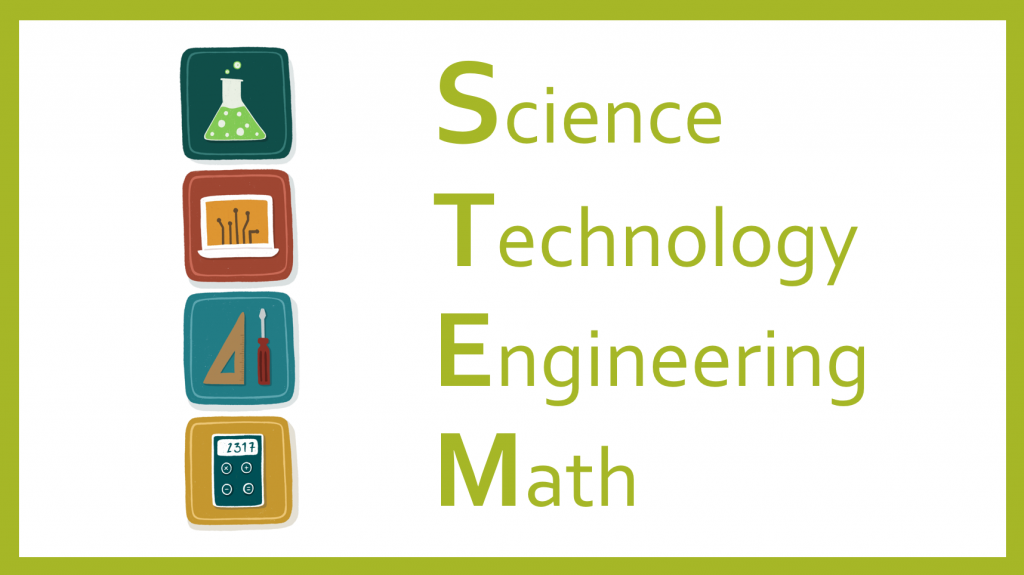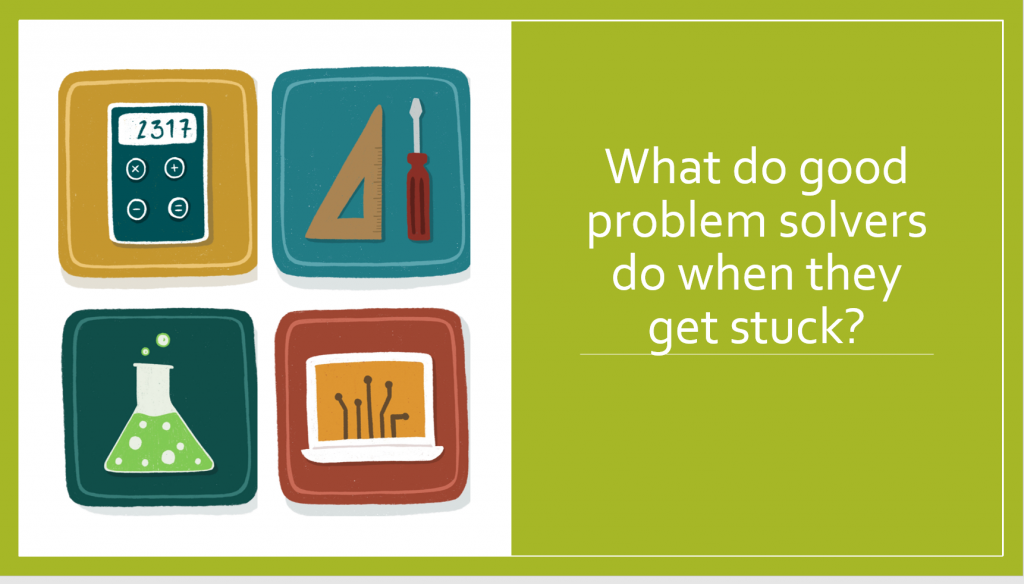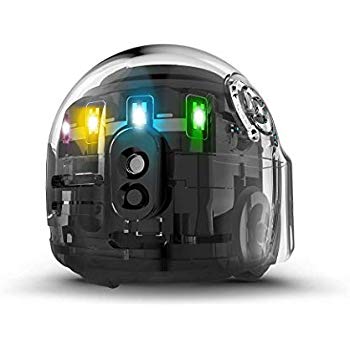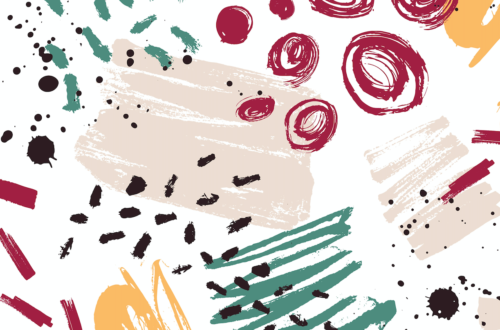The Ultimate STEM Challenge

The Plan
Last year my school decided to adopt the Code.org curriculum K-5 to help equip our students with basic coding skills. This year, our technology teacher has teamed up with classroom teachers to teach the plugged and unplugged lessons in this awesome and free curriculum. To support them in this endeavor as the digital learning coach on campus, I worked with staff to develop curriculum that incorporates more Computer Science (CS) skills. Therefore, I had the fun idea to plan and lead a school-wide STEM challenge that focused on coding. I thought it would provide support to staff as they learn more about CS themselves, and give the students a fun way to demonstrate what they are learning through Code.org. The STEM challenge reminds me of the traditional school-wide science fair, but the main differences would be that the projects would all happen at school and in teams. However, we’d showcase student projects at a school STEM night which we’d invite parents and community members to attend. I have brainstormed different design challenges for the various age groups, but they are all themed around coding and “de-bugging” an algorithm.
Here are the essential questions we will be focusing on throughout grades K-8:
- What do good problem solvers do when they get stuck?
- What are the fundamentals of computer programming?
- How are algorithms used in coding?
- How can you use computer programming to complete a task?
Students will understand…
- We can learn from our failures (aka “fail forward”)
- Success requires perseverance
- We can use an algorithm to solve a problem or achieve a goal
Students will know…
- Basic coding skills
- Computer science vocabulary (algorithm, sequence, events, loops, conditionals, etc. based on grade level)
- The design process (Plan, Test, Reflect, Revise)
- What it means to “de-bug” an algorithm
Students will be able to…
- Create an algorithm to solve a problem or achieve a goal
- Proofread and edit an algorithm to “de-bug”
The project will be centered around several ISTE student standards in both the Digital Citizen section along with two Computational Thinker standards.
Digital Citizens
2b: Students engage in positive, safe, legal and ethical behavior when using technology, including social interactions online or when using networked devices.
Computational Thinker:
5a. Students formulate problem definitions suited for technology-assisted methods such as data analysis, abstract models and algorithmic thinking in exploring and finding solutions.
5d. The student understands how automation works and use algorithmic thinking to develop a sequence of steps to create and test automated solutions.
The Process
We have yet to do the actual STEM Challenge at school, but here is a sample “De-Bugging” challenge the 2nd and 3rd graders will be given.
The OZOBOT Maze Challenge: The students will be told that they are a renowned computer programmer and have been asked to complete a maze by programming an algorithm for their Ozobot robot to get from start to finish. They will be graded with a rubric that will assess the success and complexity of the algorithm. Also, a video of the child explaining the steps of the algorithm and how it works.
Other pieces of evidence teachers will use to determine student understanding and growth:
- Student “Fail Forward” journal that documents the process of designing the algorithm and steps taken to “de-bug”
- Student self-reflection at the end of the project
- Student self-assessment on 4 C rubric that measures critical thinking, communication, collaboration, and creativeness.
- Class discussions
If you’d like to see the day to day lessons for this challenge check them out here. And if you’ve never heard of Ozobots and would like to learn more, check out the following promo video from Ozobot.
The Products
Here are the following products from the various grade levels:
Kindergarten and 1st Grade: Students will write a creative story and then program an algorithm to bring the story to life in Scratch Jr.
2nd and 3rd Grade: Students will design a maze and then write an algorithm for their Ozobot robot to be able to successfully complete it.
4th and 5th Grade: Students will create a Math review app for other students to use in review for a chapter test.
Middle School: Students will use an inquiry design model where they will identify a problem they are interested in and then seek to solve it with an algorithm.
Other Items to Note
If you are interested in recreating a school-wide STEM challenge for your school here are some other items to consider.
School Unity: Since the grade levels have different coding challenges, I knew we would have to be intentional in casting a shared vision for both teachers and students in order to unite the school in this school-wide STEM Challenge. Therefore, we will take several steps to ensure everyone is on board and feels confident and equipped.
- One bonus in using Code.org’s lessons as our curriculum K-5 is it gives us a common language when discussing coding and CS skills. Therefore, siblings in different grades or teachers can have a discussion about CS and be on the same page.
- The plan is to introduce the STEM Challenge to the staff at a PLC meeting ahead of time and ask for teachers to give input on their grade level’s challenge. They will be encouraged to change or tweak the lessons if needed since they are the experts when it comes to their students. Hopefully, this will increase staff buy in to the process and help them take ownership. Teachers will also be supported by the technology teacher, along with myself throughout the whole process. We can team-teach or model a lesson for them if they’d like.
- I have created a STEM ppt that teachers can refer to in class and save individual slides as background images to their various monitor screens around their classrooms. That way students will have a visual reminder of our essential questions and can start to transfer those questions to other academic areas such as ELA, Math, Science, etc. (for example, asking the question “What do good problem solvers do when they get stuck in math?”) This ppt will give teachers the same starting point and help provide a common foundation for STEM across the school campus.


- In addition, I hope to create a giant bulletin board in the school cafeteria and update it with different pictures of students working on their grade level’s STEM challenge. This will help unite the school because students will see what other grades are doing and hopefully will get them excited and curious. I also think students will feel empowered and will love seeing pictures of themselves working on their projects.
- Finally, we will celebrate our students’ growth at our school-wide STEM night. I believe this piece is essential in bringing our school together. Students will have the opportunity to present their projects to an authentic audience and share how they grew in their knowledge of coding. However, I would also love to give parents, siblings, and community members a chance to try out the various challenges after seeing student work. This would change the feel of the night because the role of the audience is not just looking and listening, but also about doing. I think by allowing them to tinker and play we can help cultivate more curiosity in STEM and provide a fun opportunity for students and parents to connect.
How do we intentionally include digital citizenship? I think this is a very important question we must consider. This was one area that I think I could improve on in my lesson plans. I am hoping that the teachers can help brainstorm ways to have thoughtful conversations with their students on their responsibilities to “engage in positive, safe, legal and ethical behavior when using technology, including social interactions online or when using networked devices.” (ISTE Standard 2b). One idea that was suggested was to have students co-author a list of digital citizenship reminders that they could refer to before using their devices. For example, “I will not share personal information when online” or “I will use kind words when pair-programming or collaborating with others either in person or online.” These goals can be personalized to each classroom since they will be doing different challenges and using various types of technology.
Conclusion
I am hoping that our STEM Challenge will become a beloved annual event at our school, with different themes each year. This year it was coding, specifically focused on de-bugging an algorithm, but what will next year bring? I believe these challenges will 1. support our teachers in trying out more STEM-related content in their classrooms, 2. expose our students to STEM and cultivate a curiosity to pursue STEM studies and careers. and 3. unite our school and showcase the cool things we are doing with the technology we have been given. These annual challenges will provide our students with the opportunity to tinker, design, collaborate, create, evaluate, and use critical thinking to achieve a goal.
Resources
Code.org. (n.d.). https://code.org/
Gabri Joy Studios. (n.d). Home [Facebook page]. FaceBook. Custom Artwork, 2019, from https://www.facebook.com/gabrijoystudios/
ISTE Standards for Students. (n.d.). https://www.iste.org/standards/for-students
Ozobot. (2015, March 31). Ozobot- It’s Your Move [Video]. YouTube. https://www.youtube.com/watch?v=zm_H8HXWFZ4



